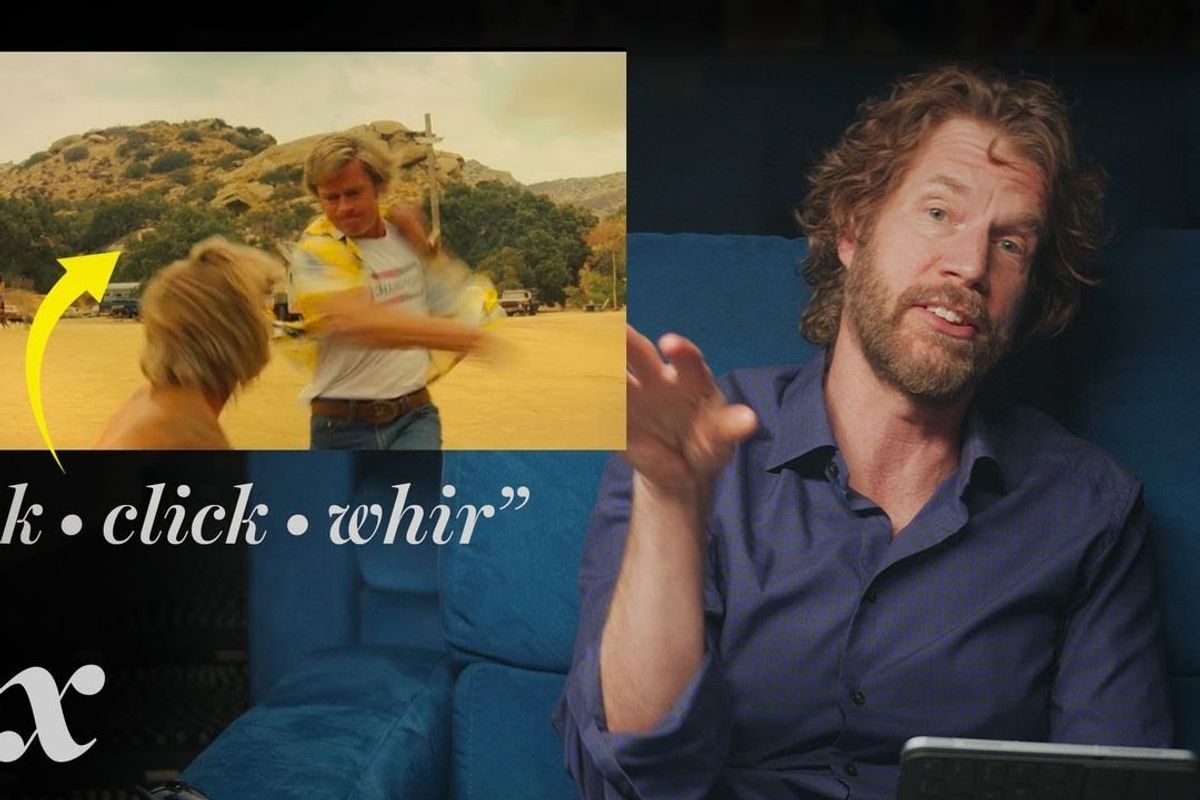How movie trailers get you hooked in a matter of seconds, explained by a guy who makes them
"It's like trying to sell a jigsaw puzzle."

Bill Neil breaking down iconic trailers for Vox.
We know that a ton of dedicated time, energy and artistic skill goes into bringing movies to life. But what about the thing that first introduces you to the movie? That 60-second video meant to encapsulate every thrill, swoon and jump scare the story promises to deliver, if only you are brave enough to step out to the movie theater (or these days, your couch) for two hours.
We are, of course, talking about the movie trailer. And take it from the ones who create them, trailers are in and of themselves a complex art form—with just a dash of psychological manipulation.
“It’s like trying to sell a jigsaw puzzle," quipped Bill Neil, trailer editor for Buddha Jones. “And in order to sell the jigsaw puzzle, you can’t show the whole picture on the box. You are only allowed to show four pieces of that puzzle.”
In an interview with Vox, Neil explains that most of the time, trailer editors are only given bits of the movie’s footage called dailies, and from that footage, they piece together what they think the overall feeling of the film is going to be. This certainly helps explain why some trailers might appear to be selling completely different movies than what was actually watched. Part of the art is in the guessing.Once an editor has the gist of what they’re selling, it’s their job to pack a hefty emotional punch in a short amount of time. There are a few techniques that can help with this, such as a “rug pull,” where the trailer takes a distinct tone shift, usually going from lighthearted to something more unsettling. This shift can happen abruptly or gradually.
But perhaps no technique is as engaging as sound design, which Neil describes as “the soul of the trailer.” In just a single minute-long teaser, Neil might compose an entire symphony of sound effects.
For Jordan Peele’s “Nope,” Neil used Stevie Wonder’s “Fingertips” throughout the trailer in several different ways—first playing it diegetically (meaning that characters interact with it in the context of a scene), then matching the sounds of a galloping horse to the song’s percussion, then giving it a creepy echo followed by silence, finishing with a deconstructed version of the song under a layer of other sounds.
In case you didn’t know, “Nope” is (SPOILER ALERT) an alien horror movie. So Neil drew a lot of visual inspirations from movies like “Close Encounters of a Third Kind,” even formatting some of the onscreen text to subtly look like a descending spaceship.
All in all, these choices make for a super creepy trailer.
As with any art form, trailer making has evolved throughout the years. Gone are the days of heavy voiceovers, and technology has made it easier than ever to access ever-growing sound effects libraries. But at the end of the day, the challenge remains the same—make people want to see the movie and make them want it fast.
Check out Neil’s full interview below, where he breaks down several iconic trailers throughout the years, starting all the way back in the 60s and going forward to the present day. It’s only further proof that trailers really do deserve their own Oscar category.

